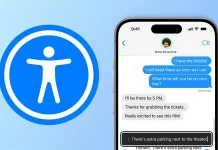
Sometimes the best advice comes from your inner circle. In the case of financial advice, that net has recently been widened to include all of social media. Nearly 80% of Americans between 18 and 41 have gotten financial advice from social media, according to a survey commissioned by Forbes Advisor. Reddit, YouTube and TikTok are the top three platforms, respectively.
While anything on social media should be taken with a grain of salt — if not also fact checked for accuracy — even financial planners agree there are some good tips to be taken from a number of these now viral money posts.
Here are five of the best and why they work.
1. The ‘No Spend’ Challenge
How it works: With over 420 million views, the #nospendchallenge is one of the latest trends taking over TikTok. The challenge is about abstaining from spending money on anything but bills and essentials such as groceries and fuel, and seeing how many days you can go without budging. Users have been cutting buying clothes, getting haircuts and eating out, for example.
Why it works: It’s basically just putting yourself on a budget, but doing so in a competitive atmosphere with peers. Even if you only get through three days the first time, it might lead you to try for five days the next round, in which case it’s building healthy money-spending habits and honing in on what you really need vs. what you just want.
2. Saving Your Savings
How it works: This one is pulled from the popular “What unconventional personal finance tip has worked well for you?” thread on Reddit. It’s like a glorified piggy bank, but it actually works for adults. It goes like this: When you buy something on sale, you take the money you would’ve spent if it was full price and move that into your savings account. So, if you bought a couch on sale for $500 that normally costs $800, you’d transfer the $300 discount into your savings. It can be applied to small purchases, too. Saved $15 at the grocery store using coupons? Transfer that to your savings and watch it add up.
Why it works: It’s an easy way to save money without having to think too much about it, and it’s a habit you can tap into frequently — you can usually find something you need to purchase on sale.
3. Reward Yourself
How it works: This tip involves setting goals for your savings account and rewarding yourself at each tier you meet. For example, if you want to save $6,000 total, you might reward yourself at the $500 mark, the $1,000 mark, the $2,000 mark and so on. Just make sure the reward doesn’t take up all of the hard-earned money you saved. One TikTok user applied it to her student loans. She suggested starting small with something like happy hour with friends and building up to a larger item like a pair of AirPods.
Why it works: Humans love being rewarded, and this idea has built-in incentives that keep you motivated to keep going.
4. The ‘How Many Hours of Work Does It Cost?’ Strategy
How it works: This one takes a bit of math, but it’s totally worth the brain exercise. Before buying anything, in particular bigger purchases, it’s helpful to analyze what it costs in terms of how many hours you’d have to work to have the money for it. Using the $800 couch example, if you make $40/hour, it would take you 20 hours of work (or nearly three full-time shifts) to pay for it. Having this information can then help you decide if you should splurge or save.
Why it works: It helps you understand the true cost of something before you give in to your impulse to buy it. It also might help you come up with an idea for a side gig to make that extra money to pay for the purchase without cutting into your budget.
5. Sticky Note Savings
How it works: To start, find an unused shoe box and a pack of sticky notes — or a more frugal alternative, like scrap paper. Write down different dollar amounts on individual pieces of paper (from $1 to $5 to $10 or even $100, whatever you can afford) and then each day, without looking, pull out one note from the box and save the corresponding amount. One TikTok user did so for 100 days and wound up saving $5,000 in the process. The great thing about this tip is it can be personalized — you can set the time frame for as long or as little as you like and the dollar amounts to whatever is in your budget (for example, maybe do more $1 sticky notes than $10 sticky notes).
Why it works: There’s a game-like element to this trick and also an element of surprise, both of which keep people engaged and make savings fun. Not only that, it can really add up your savings quickly.
























